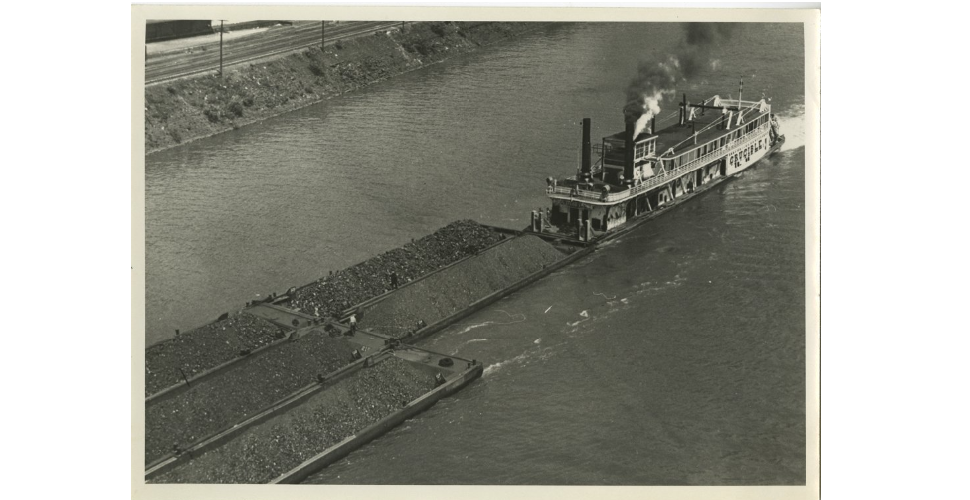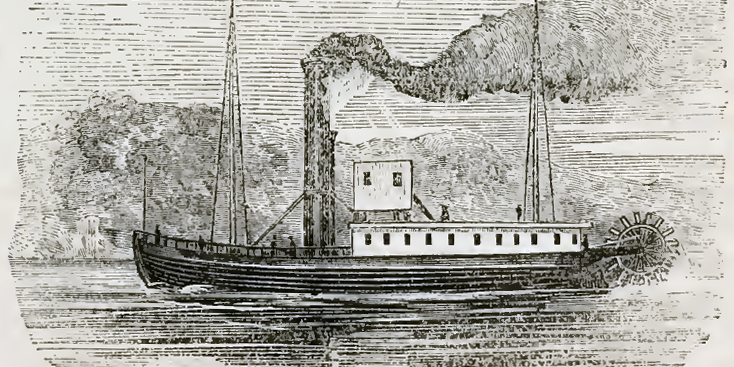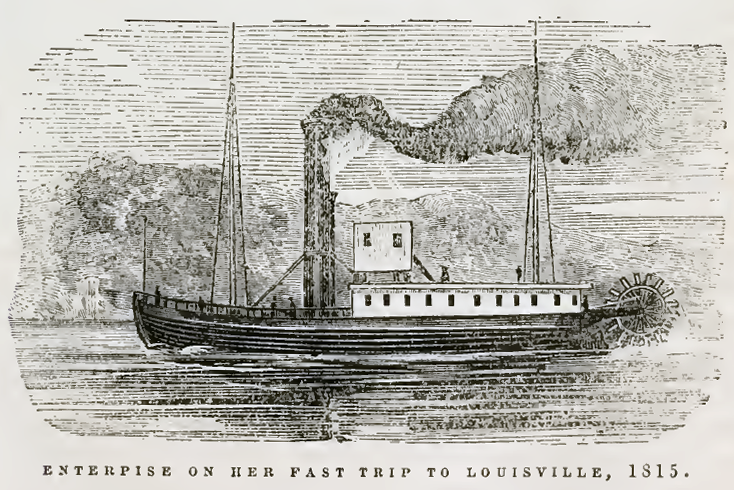Along the Greene River Trail
River Boats
Monongahela to New Orleans
Due to the abundance of natural resources in western Pennsylvania and the port in New Orleans, the rivers made the ability to transport products to market far reaching and easier than the land methods available in the late 18th century and the early 19th century. IN 1811, Robert Fulton and Robert Livingston brought their shipping company to Pittsburgh and were the first to bring steamboat commerce west of the Allegheny Mountains. In 1812, they, along with Nicholas Roosevelt, sent their newly built steamboat New Orleans from Pittsburgh to New Orleans by traveling down the Ohio River to the Mississippi River.
The second company to conduct steamboat commerce west of the Allegheny commerce west of the Allegheny Mountains was The Monongahela and Ohio Steamboat Company, founded by Elisha Hunt and Daniel French close to the boat landing in Brownsville. They made history in 1814 when they built a new steamboat with a powerful new engine. Named Enterprise, the new steamboat left Brownsville for Pittsburgh, was loaded with munitions from the Allegheny Arsenal, and journeyed down the Ohio and Mississippi rivers to reach New Orleans. General Andrew Jackson received the munitions and the Enterprise remained to work with the army until it returned to Brownsville in 1815. The Enterprise was the first steamboat to make the return trip up the Mississippi River.
Shipyards
Shipyards were building steamboats from Brownsville to Pittsburgh, with large yards at Belle Vernon, Speers, Elizabeth and many in between. California, Pennsylvania had a shipyard that ran the entire length of the town from 1852 to 1879 and built over 100 steamboats. In total, throughout the 19th century over 700 steamboats would be built along the Monongahela River.
Steamboats
Steamboats continued to be used on the Monongahela River into the middle of the 20th century. The steamer R.B. Kendall made regular daily trips from Rices Landing to connect with the 10:45 a.m. train at West Brownsville, returning at the arrival of the 2:00 p.m. train. Other steamboats that regularly carried passengers on the river were the Dauntless, Elizabeth, Adam Jacobs and the James G. Blaine.
Hewitt Cumberland Presbyterian Excursion
In the summertime, excursion trips were a popular form of recreation and entertainment. One such excursion was arranged by the Hewitt Cumberland Presbyterian Sunday School in August of 1890. It was from Fredericktown to Morgantown on the “grand excursion boat,” the City of Pittsburgh, towed by the steam tugboat the Blackmore. Round trip fares were $1 for men, 50 cents for ladies and 10-15 year olds, and 25 cents for children 5-10.
The trip began at Fredericktown at 7:00 a.m. and arrived at Rices Landing around 8:00 a.m. During the 35 minutes it took to go through the lock, the Jefferson Brass Band played for entertainment. The trip resumed and they reached Greensboro at 12:30 p.m. Additional passengers could join the excursion in Greensboro for half price. Morgantown was reached in the late afternoon and passengers were able to disembark for about a ½ hour before beginning the return trip. The trip ended shortly after midnight. The Sunday school made a profit of about $200 with approximately 900 passengers.

Tugboats
Steamboats were used a tugboats to move the coal barges from the mines to the steel works. The Homestead was frequently seen hauling barges from the mines to the Carnegie Steel Works. Other boats that were used by the Crucible Steel Company were Atha, Midland, and Crucible.
One of the best known steamboat tugs and the only one still on a river is the W.P. Snyder, Jr., originally built in 1918 and owned by the Carnegie Steel Company. It was originally named the W.H. Clingerman and was one of the first steel hulled steamboats. In September of 1945, it was sold to the Crucible Steel Company and renamed W.P. Snyder, Jr. Crucible Steel removed it from service on September 23, 1953 and it remained moored on the Monongahela River until the summer of 1955 when the boat was given to the Ohio Historical Society for exhibit at the Ohio River Museum in Marietta, Ohio. It arrived in Marietta on September 16, 1955 where it is permanently moored and available for tours.
About the Greene River Trail Signage Project
Greene County Tourist Promotion Agency completed this project in partnership with the Rivers of Steel Heritage Area. Funding was provided in part by a grant from the Pennsylvania Department of Conservation and Natural Resources, Bureau of Recreation and Conservation, administered by Rivers of Steel.
Special thanks to: Brice & Linda Rush, Danielle Nyland, Flenniken Public Library, Greene County Historical Society, Greene Connections, Advanced Masonry, Greene County Commissioners, Greene County Conservation District, and Greene County Department of Recreation.








